#human history
Text
The destruction of the great library of Alexandria has been lamented as one of the biggest losses of the ancient world.
#library of alexandria#greek#library#human history#ancient origins#ancient#history#knowledge#hidden knowledge#ancient world
35 notes
·
View notes
Text

#lgbtq history#black history#world history#history#culture#anthropology#human history#archaeology#teacher#teaching#students#school#classroom#teachers#learning
6K notes
·
View notes
Text
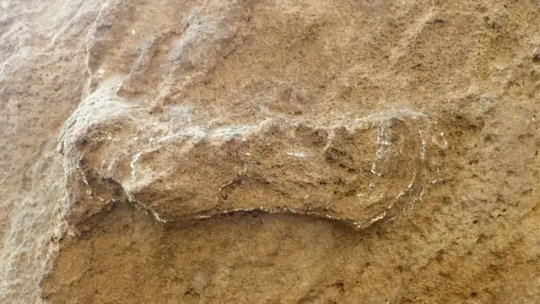
Oldest human footprint discovered, made 153,000 years ago in South Africa.
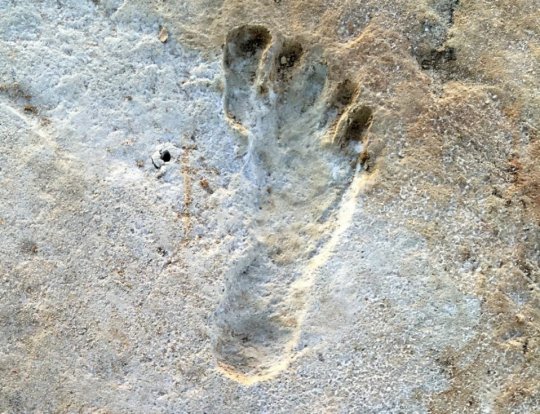
Oldest human footprint in North America, made 21,000 years ago in New Mexico, USA.

Oldest human footprint on the Moon, made July 20, 1969 on the Sea of Tranquility, Earth's moon.
2K notes
·
View notes
Text

Reliquary hand of Saint Teresa de Jesús, Spanish nun and poet, 16th Century.
#reliquary#saint teresa#artifact#jewels#gold#blue#history#16th century#human history#objects#modern age#early modern age#aesthetic
480 notes
·
View notes
Text
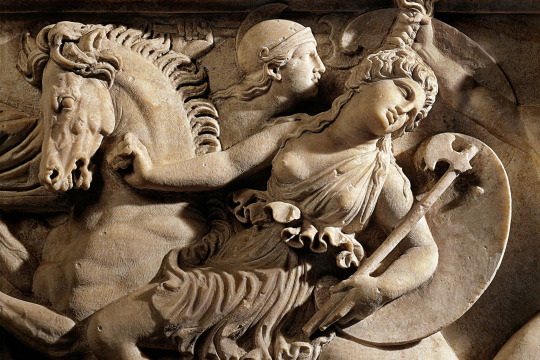
An Amazon and a Greek engage in mortal combat on this second-century A.D. Roman sarcophagus.
Louvre Museum, Paris
#art#amazon#amazons#greek#southern europe#mediterranean#greek mythology#human history#classic art#fine art#european art#classical art#europe#european#fine arts#europa#traditional art#an amazon and a greek#public domain
543 notes
·
View notes
Text
Pando - The Largest Single Organism by Mass and 14,000 years old, and some perspective on just how old that is.
A random thought came to my head last night...

This is Pando.
All of this? Is a single male aspen tree. This entire thing is a single tree with multiple stems sharing a single root system.
It is the largest tree by mass, and the heaviest single organism, weighing in at 6000 metric tons. For perspective, that's 20 blue whales in mass.
But what also intrigues me is that... well. It's an old tree.
Established in 12,000 BCE, meaning it would be 14000 years old by 2023.
By the the last Smilodons died out in 10,000 BCE, it would have already been 2000 years old.
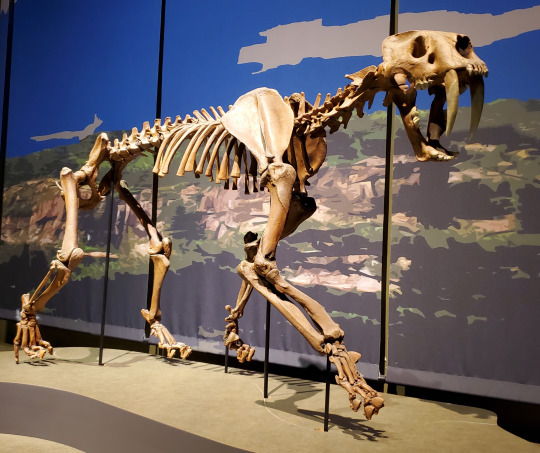
And Pando is still a youngster compared to the high estimate age of this clonal colony of sea grass estimated to be 100,000 years old.

For perspective, when the last Neanderthal died in 40,000 BCE?
This sea grass would have already been 60,000 years old.
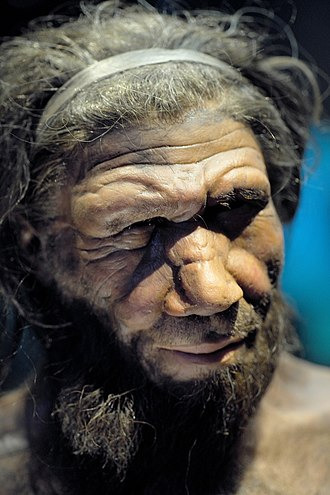
If human civilization (as in, the kind of organized polity that can be identified with things as "states" and "urbanization" among a plethora of other things) was established during 5000 BCE, and thus 7000 years old:
Pando would have already been 5000 years old.
The Sea grass colony would have already been 93,000 years old.
And considering that the oldest vertebrate, that is the Greenland Shark can live for 500 years?
All of human civilization encompasses the lifespans of just 14 Greenland Sharks.
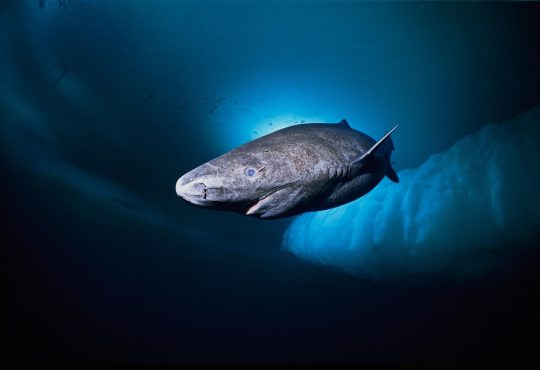
I dunno... it just really shows that we pretty are a tiny blip in the grand scheme of Earth's geological history.
A very humbling thought if you ask me.
#paleontology#anthropology#history#ancient history#botany#science#human history#life on earth#pando#greenland sharks#shower thoughts
337 notes
·
View notes
Text
The lack of ancient time travel stories is existentially terrifying
Through all the ancient myths and legend that exist, it's horrifying to think that none involved traveling to the past. There were some with sped up time or people sleeping a long time. But travel to the past just wasn't a thing that existed as a concept.
Today, it's everywhere. There's not a single person who hasn't heard of time travel. But in ancient stories, even the gods themselves are subject to the whims of time.
It seems like such an obvious thing to tell stories about too. Who hasn't made a mistake and wished they could go back and do it over again? It's so basic.
Yet it's like through all of human history, nobody even considered it until the couple hundred years. It's as if the idea was so incomprehensible that we couldn't think of it.
Until, that is, after we did.
That makes you wonder though, what possibilities are out there that might still be so obvious be we haven't thought of yet? And why couldn't we think of time travel before then?
We all think of imagination as unlimited, and yet something as simple as getting a do-over on a past mistake is unheard of over thousands of years of fictional stories we've recorded.
#time travel#writing#writeblr#mythology#myths#history#legends#world history#anthropology#human history#time#fiction#tropes#writing tropes#writing stuff
516 notes
·
View notes
Text
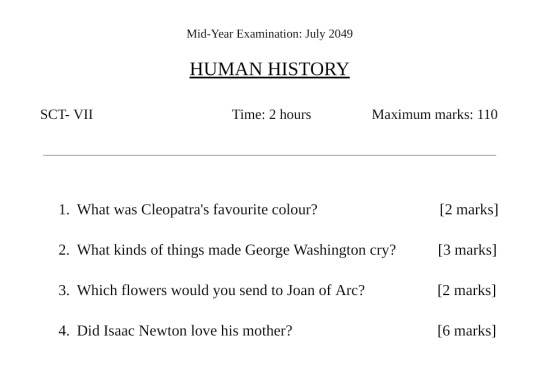
#food for thought#my writing#i love humanity#i love the inherent importance of every minute life#i love the small things that make up every person#i love remembering people for who they were not what they did#human history#human nature#the human condition#poetry#prose#aesthetic#prose poetry#literature#art#my art#spilled ink#spilled thoughts#writing#words#my words#mixed media
243 notes
·
View notes
Text
Prehistoric Mirrors from Turkey, c.6000 BCE: these are the oldest manufactured mirrors in the world, dating back about 8,000 years; they were meticulously crafted from pieces of obsidian

Two of the obsidian mirrors from Çatalhöyük (Turkey); this pair was found buried together back in 2012
At least eight of these obsidian mirrors have been found at Çatalhöyük, a Neolithic site located in Turkey. All of these mirrors date back about 8,000 years, and each one was crafted from a chunk of obsidian (volcanic glass) that was knapped into the shape of a disc and then meticulously polished with progressively finer abrasives until a smooth, slightly convex surface had been developed. Some of these mirrors can still produce remarkably clear reflections.
Sources & More Info:
The Archaeologist: World's Oldest Mirrors Found at Neolithic Çatalhöyük Site
Çatalhöyük Research Project: Archive Report from 2012 (PDF download)
Çatalhöyük Research Project: Main Website
The Past: Cyber Archaeology, How 3D Modeling is Unpeeling the Neolithic at Çatalhöyük
#archaeology#artifact#anthropology#neolithic#prehistoric#neolithic mirrors#anatolia#turkey#Çatalhöyük#human history#obsidian#volcanic glass#crafting#art#prehistoric art#human nature
609 notes
·
View notes
Text
The freedom to abandon one’s community, knowing one will be welcomed in faraway lands; the freedom to shift back and forth between social structures, depending on the time of year; the freedom to disobey authorities without consequence – all appear to have been simply assumed among our distant ancestors, even if most people find them barely conceivable today. Humans may not have begun their history in a state of primordial innocence, but they do appear to have begun it with a self-conscious aversion to being told what to do. If this is so, we can at least refine our initial question: the real puzzle is not when chiefs, or even kings and queens, first appeared, but rather when it was no longer possible simply to laugh them out of court.
The Dawn of Everything: A New History of Humanity by David Graeber and David Wengrow
#the dawn of everything#David Graeber#David Wengrow#archeology#prehistory#anthropology#history#upper paleolithic#paleolithic#human history#sociology#book recommendations#book quotes#nonfiction#readings#reading list#reading recommendations#book rec#cultural anthropology#history of science#inequality#anarchism#writings
1K notes
·
View notes
Text
Out of the many incredible artifacts that have been recovered from sites in Iraq where flourishing Sumerian cities once stood, few have been more intriguing than the Sumerian King List.
24 notes
·
View notes
Text
“There are reports that, even when the facts about conception and birth were made known to primitive peoples, they refused to accept them as true. Some were inclined to view the information as a defect in the intelligence of the white man. Malinowski relates how the Trobrianders went to great pains to explain to him that sexual intercourse had nothing to do with the birth of a child.
Their attitude to their own children also bears witness to their ignorance of any causal relation between congress and the ensuing pregnancy. A man whose wife has conceived during his absence will cheerfully accept the fact and the child, and he will see no reason at all for suspecting her of adultery. One of my informants told me that after over a year's absence he returned to find a newly born child at home. He volunteered this statement as an illustration and final proof of the truth that sexual intercourse has nothing to do with conception. . . .
My friend Layseta, a great sailor and magician of Sinaketa, spent a long time in his later youth in the Amphlett Islands. On his return he found two children, borne by his wife during his absence. He is very fond of them and of his wife; and when I discussed the matter with others, suggesting that one at least of these children could not be his, my interlocutors did not understand what I meant. (Sexual Life of Savages, pp. 193-94)
Frazer points out that the biological facts of life we take for granted could not have been known to primitive peoples. While the part played by the mother in the birth process is obvious, he wrote, how could people in the prescientific era "perceive that the child which comes forth from the womb is the fruit of the seed which was sowed there nine months before?" (Totemism and Exogamy, vol. IV, pp. 61-62).
Margaret Mead makes the even more important point that to the primitive mind children were not the fruit of a momentary act of sexual congress but of years of patient nurture and care:
The Arapesh have no idea that after the initial act which establishes physiological paternity, the father can go away and return nine months later to find his wife safely delivered of a child. Such a form of parenthood they would consider impossible, and furthermore, repellent. For the child is not the product of a moment's passion, but is made by both father and mother, carefully, over time. (Sex and Temperament in Three Primitive Societies, p. 31)
Mead here puts a finger on the most essential characteristic that made the husband the father of a woman's child, namely, that he now had the right to assist his wife in the care and protection of her child. From this standpoint, a new "male mother" makes his appearance in history—the "husband-mother"—as against the former male mother, the mother's brother. Thus fatherhood as a social institution did not begin on the basis of sexual intercourse between a man and woman but as a set of maternal functions performed by the man for his wife's child.”
-Evelyn Reed, Woman’s Evolution: From Matriarchal Clan to Patriarchal Family
814 notes
·
View notes
Text
hi guyss :) im studying supernatural belief, religious belief, locus of control, and their relationship to evolutionary sex differences for my master's thesis!! i'd grately appreciate if yall can complete and share this survey:
#dark academia#chaotic academia#study motivation#study blog#religion#evolution#supernatural#destiel#human#human history#history#religious trauma#evolutionary biology#evolutionary psychology#evolutionary anthropology#high evolutionary
304 notes
·
View notes
Text
Maybe there will be a time when we're gone, and the Corvids and the Octopi have evolved to a point where they can study us. And I hope they're gentle to us, I hope they don't mock us in a way that separates our folly from themselves. They should remember where we went wrong, but they should remember the good parts too. I hope they remember our glistening towers and endless temples, I hope they remember Dante, and Mary Shelly, and Tolkien, I hope they remember the plagues we cured, and the time we walked on the moon, I hope they remember our pomes, and are art, and that we lived together and had homes and families. I hope they don't just remember our wars.
Or maybe I just hope they remember us at all.
#196#my thougts#writing#my writing#crow#corvid#octopus#post apocalypse#post apocalyptic#post human#apocalypse#short fiction#flash fiction#human history#hopeposting#hopepunk
170 notes
·
View notes
Text
I love this. I posted a little about this before, but wanted to expand. Women's history fact of the day:
Women of the Neolithic era in particular loved keeping pets and it was common for them to trap small animals - such as cats - and adopted as pets.
In the Amazon region, where hunting and gathering and subsistence horticulture is still practiced by a handful of surviving Amerindian groups, hunters commonly capture young wild animals and take them home where they are then adopted as pets, usually – although not invariably – by women.
There's a theory that cats may have domesticated themselves by being attracted to human villages that produced grain and seeds and attracted rodents, and then the bolder cat clans survived under natural selection. Or, alternatively, women domesticated cats.
Based on these sorts of observations, it could be argued that the domestication of F.s. libyca occurred where and when it did because tamed wildcats were already an integral feature of village life as a result of people actively adopting, hand-rearing and socialising young wildcats to keep as pets
The relationship between cats and women stretch back since the stone age. They were burned with us during the witch trials (rabbits commonly too!), suffered from abuse and treated as property with us by men ambivalent to us under religions such as Christianity, were associated as us within medieval folklore and as a metaphor for female sexuality and anatomy ("pussy"), and continue to be associated with us today.

Women's independence from man is derogatorily associated with cats ("crazy cat lady"), a nod to female (and feline) separatism. It's tendency to groom itself frequently was also associated with cleanliness and domesticity, and it was frequently used in posters by anti-suffragettes symbolically to denote that women were simple and delicate, that women's suffrage was as absurd as cat suffrage. Some suffragettes took back the meaning of the cat, adopting a (black!) cat named Saxon as their official mascot.

They survived male oppression throughout history, for thousands of years, right beside us and within our arms.
#cats#cat appreciation post#cat history#women's history#women and cats#kitties#witch trials#witchcraft#human history#evolution
514 notes
·
View notes
